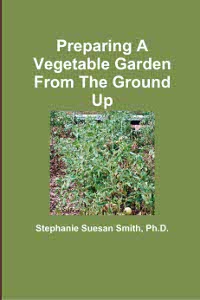
bag of fertilizer (no endorsement intended)
Buying Fertilizer
When you buy a bag of fertilizer, it has three numbers on the front of it. Do you know what those numbers really mean? By law they are listed in this order: Nitrogen-Phosphorus-Potassium. The numbers are the percent of the product inside that is composed of each number. For example, a popular mix is 3-2-1. That means the bag is three percent Nitrogen, two percent Phosphorus, and one percent Potassium.
Now, the math.
So far, so good. However, when you do a soil test to see what nutrients you need to put in the soil, your results are expressed in pounds per 1,000 sq ft. That is the size of the average lawn (front or back). So how do you translate what is in the bag and what is on your soil test results into the amount of that bag to spread? It can be a bit complicated.
If you need to put one pound of Nitrogen on your lawn and you have a forty pound bag of fertilizer, it is tempting to just put out a pound of fertilizer. However, you would only be putting out .03 pounds of actual Nitrogen. This is because only three percent of the product is Nitrogen. Some of the rest is Phosphorus, some Potassium, but a lot is the carrying agent. The carrying agent is designed to make the fertilizer easier to spread.
In order to deliver one pound of Nitrogen, you need to divide the percent of Nitrogen in the bag you bought by the amount of actual Nitrogen you need to deliver, in this case one pound. The result is the amount you actually spread. In this example, you would spread 33.33 pounds on your lawn. That is much different than what you first thought!
Three bags of Fertilizer
If the amount of Phosphorus and Potassium are very different from the amount of Nitrogen you need to spread, it is best to buy separate products for each element. Plants need Nitrogen to grow at such a high rate it is hard for them to get it all from the soil, so you will nearly always need to add Nitrogen. Phosphorus and Potassium are often present in adequate quantities, so no additional product is needed. In fact, in my area, we have very high amounts of Phosphorus and Potassium and adding these can damage the plants.
Soil Testing
You can obtain soil testing instructions and the bags to put the soil in from your local Extension Office. You then fill the bag and ship it to the address on the bag with your check for the fee. In Texas, the basic test is $10. In a few weeks you get the results by mail. These results tell you how much Nitrogen, Phosphorus, and Potassium you need to put on your lawn. Your local Extension Office can explain them if you cannot interpret them.
 For more help gardening, buy my book, Preparing A Vegetable Garden From The Ground Up
For more help gardening, buy my book, Preparing A Vegetable Garden From The Ground Up
Available in print or ebook from Amazon.com or other retailers, this book walks you from choosing the site of your garden all the way through what to do after the harvest. Buy a copy for yourself or a friend today!


Trackbacks/Pingbacks